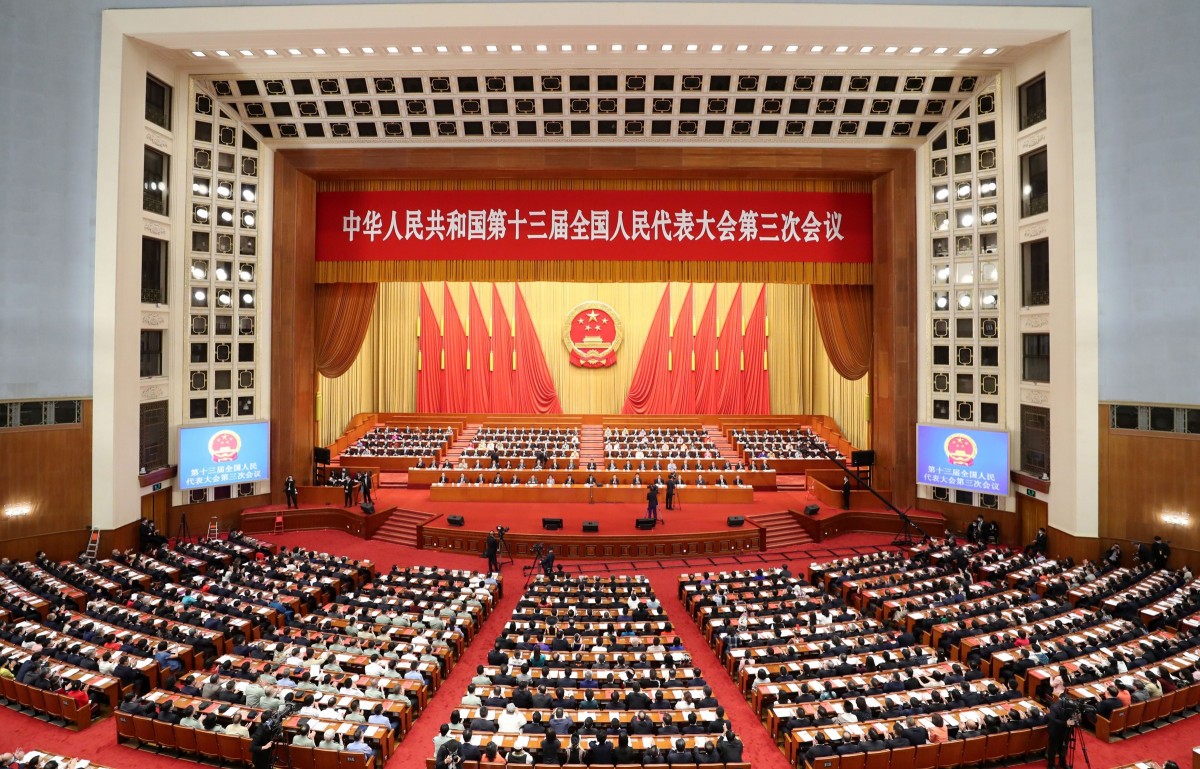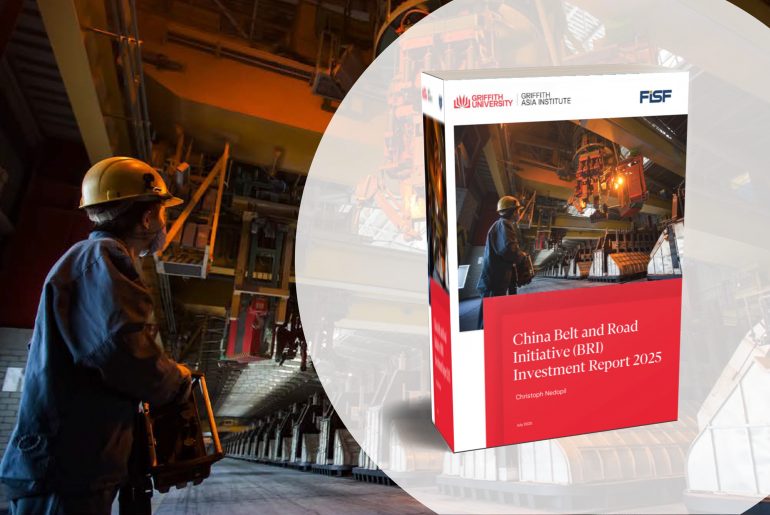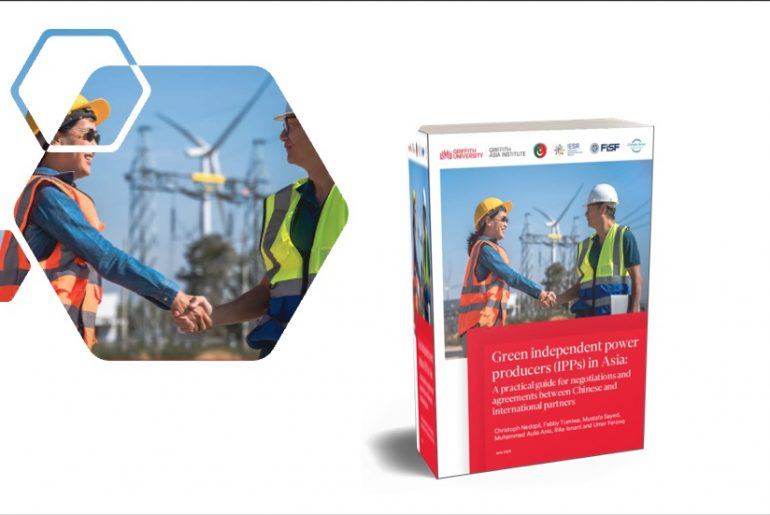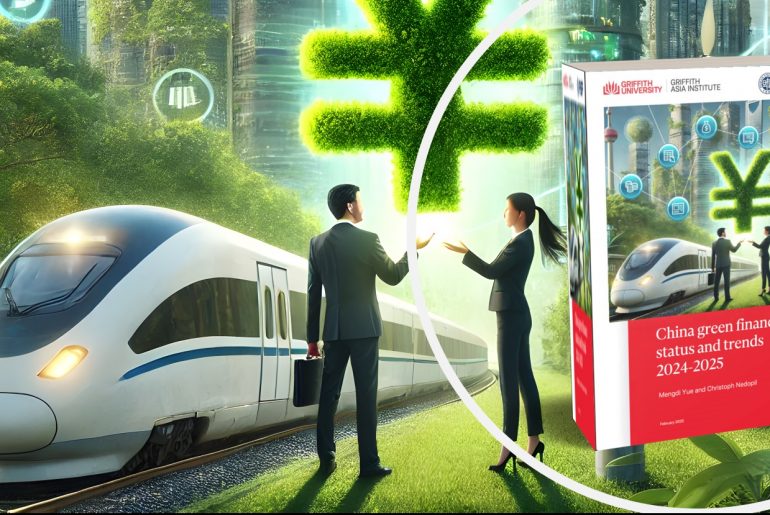China’s annual “Two Sessions” meetings took place from March 4 to March 13, 2023. It featured significant institutional reforms, elections of key personnel, and policy orientations for the China’s economic, social and political development. The Two Sessions consist of the National People’s Congress (NPC) and the Chinese People’s Political Consultative Conference (CPPCC), both of which support legislative and policy-related decisions offering insights into China’s political landscape and priorities for the upcoming year.
One important piece of the Two Sessions to provide insights into future (green) development of China is the government work report (English version) delivered by China’s outgoing Premier Li Keqiang. The government work report typically outlines the previous year’s accomplishments and the upcoming year’s major tasks. As it was the last report by Premier Li, the 2023 government work report took a different emphasis on the past – rather than the upcoming work: it included a comprehensive summary of achievements over the past half-decade. As a result, the work deployment for 2023 is relatively concise, but it is supplemented by the draft National Economic and Social Development Plan 2023. This article is based on an analysis of these reports and surrounding leaders’ statements to analyze trends for China’s engagement in green development, green finance and the Belt and Road Initiative (BRI).
Overall, green development and decarbonization were still mentioned as a routine in the 2023’s work report and the two sessions, but it appears that the emphasis of development has shifted towards economic stability with moderate growth, self-sufficiency, and employment: the government has set a GDP growth rate target of only 5%, the lowest in almost 30 years (excluding the 2020 epidemic when no growth target was set). This comes after 3% GDP growth in 2022 and might indicate concerns on ongoing demand contractions, supply shocks and the challenges of geo-political tensions.

Highlights on Green development for China
Most importantly, the government report mentioned China’s targets to achieve carbon peaking by 2030 and carbon neutrality by 2060 once by saying “we worked toward the targets of peak carbon emissions and carbon neutrality with well-conceived and systematic steps”. Compared to the work report published in 2022 that mentioned ambitions to “transition from assessing the total amount and intensity of energy consumption to assessing the total amount and intensity of carbon emissions”, the language was accordingly softened.
Within this framing, the Government Work Report highlighted developments of China’s energy and emissions reduction (also environmental/ecological protection, but not a focus of this article) over the past five years. Noteworthy outcomes for the past five years officially subsumed under “promoting green development mode” – some of which seem not directly positive for reduction of greenhouse gases – include:
- Energy:
- China’s energy consumption per unit GDP has decreased by 8.1%.
- China has transformed more than 1.05 billion kilowatts lower efficient coal capacity into the most cutting-edge and efficient ultra-supercritical technologies.
- China’s installed capacity of renewable energy increased from 650 million kilowatts to more than 1.2 billion kilowatts:
- Clean energy (solar, wind, nuclear, hydro, and biomass) consumption share increased from 20.8% to 25.5%.
- Emissions:
- China’s CO2 intensity – that is how much CO2 is emitted per unit of GDP – has decreased by 14.1% [which would be significantly slower progress than in the previous five years].
The report also introduces a shorter summary of progress since 2022:
- China has promoted the implementation of green smart appliances and green building materials in the countryside areas.
- The total sales of new energy vehicles reached 6.887 million, grown by 93.4% compared to 2021.
- China has leveraged coal resources and increased advanced coal capacity to ensure energy supply.
From the statements in the report, it is clear that China has been developing not only renewables but coal capacity as well over the last two years. Economic development could be a major driver behind this, with the coal industry closely linked to the growth of the economy. On the other hand, energy security is at the core of China’s policy-makers concerns. As global fuel markets experience high volatility causing price hikes and unstable supplies in the past two years, China has further expanded coal capacity, its largest energy resource, to ensure sufficient power delivery.
This could indicate the uncertainty of significant new low-carbon policies being introduced this year. However, it is worth noting that the National Bureau of Statistics reported that in 2022, China’s energy intensity only decreased by 0.1% compared to the previous year, and carbon intensity only dropped by 0.8%. While there was progress, this represents a significantly slower rate of improvement than in previous years (2021: 2.7% and 3.8%, respectively). It should be emphasized that the current level of progress towards reducing carbon emissions is not on the trajectory to meet global climate targets.
Similar to the government work report, several delegates and experts alongside the two sessions have explained China’s re-emphasis on coal: Wu Xinru, Professor at the School of Economics, East China Normal University, explained that the price surge of oil and natural gas in the international market has led to rising demand for coal, which is a natural choice of the market. Guo Haifei, Director of the Green Innovation Office of the Advisory Committee of China Investment Association, pointed out that clean energy has become the main source of newly added installed capacity for power generation, yet due to drawbacks of its volatility and intermittency, coal is necessary for the safe operation of the power system in the short term.
The Report also provides and outlook for 2023 where “transition to green development” is the seventh of the eight working priorities. The 2023 target for energy consumption per unit GDP reduction is set at 2%, which is lower than the past decade’s annual average of 3.3%. There is no target (either intensity or absolute) mentioned for carbon emission. Other high-level ambitions without much detail for 2023 include:
- Accelerate the digital transformation of traditional industries and small and medium-sized enterprises, and strive to improve the level of high-end, intelligent, and green.
- Promote clean and efficient utilization of coal and technology research and development.
- Accelerate the construction of a new electric power system.
- Promote energy conservation and carbon reduction in key areas.
Additional to the work report, the draft Development Plan 2023 – possibly prepared by China’s next premier Li Qiang, highlighted a continued decline in energy consumption per unit of GDP and reduction of discharge of major pollutants, focusing on controlling fossil energy consumption, and steadily improving the quality of the ecological environment. It also emphasized the following tasks:
- Support the development of green and low-carbon industries, and accelerate the green transformation of key areas such as industry, construction, transportation, etc. (1st point in section 8 of 2023 key tasks)
- Actively and steadily promote the carbon peak carbon neutralization, adhere to “getting the new before discarding the old”, and implement the “Ten Actions for Carbon Peak” step by step. (4th point in section 8 of 2023 key tasks)
Compared to 2022’s ambitions, decarbonization and energy transition in 2023’s work report seems deprioritized. 2022’s report has put much ink on the deployment of relevant works and much more in detail, including pinpointing specific renewable technologies (i.e., large wind and solar power base, biomass) to boost, specific industries (i.e., iron and steel, non-ferrous metals, etc.) to decarbonize, and clear instructions on restricting and incentivizing policies. For instance, it required a transition from “dual control” of total energy consumption and intensity to “dual control” of that of carbon emissions. Moreover, whereas 2022 stated to orderly reduce and replace coal after “promote cleaner and more efficient use of coal”, 2023’s report plans to enhance relevant technology research and development.
Thus, whereas 2021 and 2022 have witnessed many advancements such as improved “1+N” policy framework for carbon peaking and carbon neutrality, launching of the national carbon trading market, and issuance of a series of incentive policies, such as carbon emission reduction loans and other green finance measures, 2023 might be marked by more prudent progress in the policies of carbon reduction area.
Nevertheless, it can be expected that specific green industries will continue to be one of the pillars to support China’s economic development. On the one hand, renewable energy vehicle is listed as the second focusing area to boost domestic demands in the draft Development Plan 2023. On the other, the report marks one of the key focuses for industrial development is improving the green level of traditional industries and small and medium-sized enterprises.
| Takeaways: Strategically, China appears to prioritize energy security over other strategic goals in the energy sector in the near term, including supporting coal while also leveraging other clean and green resources and technologies to support economic growth. Coal’s role would continue to at least stay stable if not grow in the transition process to serve as a basis for combination with a larger scale development of renewables in the energy system. With carbon peaking pledge in 2030 seven years away, China needs to pick up pace in “establishing” so as to “breaking”, including accelerating the electricity system reform, carbon emissions trading, and other areas of work, to march towards larger emission reduction progress. |
Green finance
This year’s Two Session has unveiled a significant reshuffling of its financial sector through the Institutions Reform Plan and the impact on green finance is currently unclear.
Out of the thirteen reforms outlined, six of them are targeted on the financial sector, demonstrating its paramount importance in the broader reform agenda. One of the major changes will be transforming the China Securities Regulatory Commission (CSRC) into a government agency instead of a public institution – directly under the State Council. CSRC is responsible for supervising and managing the national securities and futures market. In addition, the CSRC will take on the responsibility of reviewing corporate debt issuance, a role that was previously held by the National Development and Reform Commission (NDRC). It is anticipated to eliminate the previous fragmentation of supervision and promote greater standardization of the bond market.
Furthermore, the reform plan also will set up a national financial regulatory administration based on the China Banking and Insurance Regulatory Commission (CBIRC), which will not be retained. It will oversee regulating financial industry except for the securities sector, representing a strengthened status on regulation and risk prevention.
Although lots of unknowns remains for the green finance sector, the reform could possibly provide better guarantees in standard promotion, statistics, and anti-greenwashing.
Specific for green finance, the government work report for 2023 does not explicitly mention green finance as a major task, compared to the 2022 report that explicitly called for the utilization of green finance. Instead, the report broadly emphasizes improving policies to support green development, which may encompass green finance policies.
Despite not being explicitly mentioned, green finance is poised to play a significant role in supporting China’s “high-quality development” within the infrastructure and industrial sectors, particularly in areas where China is seeking greater involvement from private and foreign investors. The 2023 work task section highlights the importance of stimulating private investment in key national projects, in which energy infrastructure is largely involved, such as large clean energy bases, renewable energy vehicles, and smart energy grids. This is also in line with a policy issued by the National Development and Reform Commission (NDRC) in October 2022 that aims to have foreign investment actively participate in carbon peaking and carbon neutrality initiatives and contribute to the development and revision of relevant green and low-carbon standards.
Zhang Kui, a CPPCC member and President of the Hangzhou Central Sub-branch of the People’s Bank of China, has highlighted in an interview ahead of the Two Sessions that the supply of green finance is inadequate and there exists a significant gap in investment and financing demand against the backdrop of carbon peaking and carbon neutrality goals. The development of green finance needs to be enhanced in terms of comprehensiveness, balance, and sustainability. Zhang’s and several other propose to improve green finance by:
- Expanding pilots in green finance, replicate and promote reform experiences, and continuously improve the level of green finance supply.
- Scientifically setting the “green enterprise” identification standard, and provide preferential policies for eligible ones.
- Developing green bills and promote the green development of small, medium, and micro enterprises.
- Deepening the innovation of green financial products and services, and include environmental equity assets such as carbon emission rights, pollution emission rights, and energy use rights into the scope of qualified collateral.
Meanwhile, the carbon market, a critical component of green finance, has attracted numerous proposals from representatives. Among them, Shufu Li, one of the CPPCC members and Chairman of Geely Holding Group, suggested incorporating other high-emission industries such as steel and cement, which have better data statistics, into the trading system during the 14th Five-Year Plan period, and diversifying carbon financial products. However, further planning and the next steps for China’s ETS remain unclear.
| Takeaways: Finance to support traditional industries’ upgrading and transformation would continue. For example, the previously released re-lending program for clean and efficient use of coal which will be continued until the end of 2023.More developments on internationally aligned green/ESG taxonomy and standards can be expected to attract foreign investment and cooperation (in green and low carbon areas). At the National Ecological and Environmental Protection Work Conference in February, officials stated the goal of “completing” the establishment of mandatory corporate environmental disclosure, a significant shift from the previous aim of “improving”.The carbon market’s progress may be limited since there is currently no clear roadmap for when to include other key emitting industries beyond electricity generation. Additionally, the voluntary carbon market is awaiting a restart, which could add more liquidity and vitality to the market. |
Belt and Road Initiative (BRI) development
The Belt and Road relevant work arrangement in the government work report usually features as “promote high-quality joint construction of the Belt and Road.” This year, the draft 2023 Development Plan adds a few more lenses to the task as it is the tenth anniversary of the announcement of the Belt and Road Initiative (BRI), yet without much concrete actions or outcomes:
- Ensure the success of a series of key initiatives in the tenth-anniversary series of the Belt and Road Initiative.
- Make efforts to consolidate and expand pragmatic cooperation with co-building countries, with a focus on achieving tangible results.
- Prepare for the upcoming Third Belt and Road International Cooperation Forum.
While the government report does not provide more details on what initiatives China plans to launch at the tenth anniversary of BRI, the “high level of opening up” part in the work report adds some more ideas, such as greater support for the development of overseas warehouses and accelerating efforts towards building a strong trade nation. There is also an emphasis on deeper integration of domestic and international industrial and innovation chains, particularly in critical areas such as 5G, new infrastructure, and renewable energy technologies.
Alongside the work report, some proposals and ideas of representatives and recent meetings below further provided ideas for the development of the BRI.
Wang Chenxing, CPPCC member and associate researcher of the Chinese Academy of Social Sciences, suggests improving the digitalization, greenness, and health of public products and jointly building a high-quality and sustainable “Belt and Road” during a Two Session interview.
Yu Miaojie, representative to the National People’s Congress and president of Liaoning University, said in a Two Session interview that foreign trade is still the most important engine driving China’s economic growth. In terms of growth highlights, he mentioned that countries alongside BRI will account for one-third of China’s total foreign trade during the “14th Five-Year Plan” period.
Moreover, at the same time as the two sessions, the 2nd Annual Meeting of the Belt and Road High-Quality Development Academic Forum was held on March 6th, during which the experts underscored the blueprint for BRI development and investment.
Bai Chunli, chairman of the Forum proposed the principle for the next step of BRI development, including focusing on sustainability and social welfare, promoting practical green technology, and using it as a carrier to expand new space for international cooperation.
According to a number of experts, there is a growing consensus that deeper collaboration is needed between the Belt and Road Initiative (BRI) and other international initiatives. One such supporter is Liu Yong, former chief economist of the China Development Bank, who has suggested integrating the BRI with the United Nations 2030 Agenda and the African Union’s 2063 Agenda. Meanwhile, Wang Huiyao, Chairman of the Globalization Think Tank, has recommended the creation of a multi-level public cooperation and service platform for the BRI, as well as the establishment of a “Belt and Road” international development bank cooperation alliance. Also, risk prevention has been mentioned during discussion as well as there are growing risks in sovereign in many BRI countries.
From the government report, proposals, and expert opinions, a trend in policy orientations is China seeks to grow trade links, cooperation, and green technology developments alongside the Belt and Road.
| Takeaways: BRI would be an important pillar of “external circulation” to supplement China’s internal circulation through stimulating trade and bilateral investment. Foreign trade will be at the core of the BRI pillar with the growth of China’s foreign trade/export on green and low-carbon technologies. Increased cooperation on green taxonomy and investment along the BRI region shall be witnessed as the Green Investment Principle (GIP), established its first African branch during COP27 and will also prepare for the GIP Southeast Asia branch. |
Summary table of green development related annual targets (qualitative and quantitative)
| 2020 | 14th Five Year Plan | 2021 | 2022 | 2023 | |
| Targets | |||||
| GDP growth rate | No target set due to pandemic | None (adaptive) | Above 6% | 5.5% (3%) | Around 5% |
| New employment | 9 million | None | 11 million | 11 million | 12 million |
| Energy consumption per unit GDP (and relevant qualitive targets) | A further drop in energy consumption per unit of GDP and the discharge of major pollutants. | Reduce by 13.5% (Expected annual rate at 2.6%) | Reduce by about 3%.A further improvement in the environment. A further drop in the discharge of major pollutants. | Not mentioned.A further improvement in the environment. A further drop in the discharge of major pollutants.Newly added renewable energy and energy consumption of raw materials are not included in the total energy consumption control.Promote the transition from “dual control” of energy consumption to “dual control” of total carbon emissions and intensity. | Not mentioned (other source: reduce by 2%, will strive for better results in actual work)A further drop in energy consumption per unit of GDP and the discharge of major pollutants. Focus on controlling fossil energy consumption. |
| CO2 emission per unit GDP | No specific target. | Reduce by 18% in five years (Expected annual rate at 3.6%) | No specific target. | No specific target. (Reduced by 0.1% compared to 2021) | No specific target. |
| Qualitative goals | |||||
| Green development | None. | Promote green development and promote harmonious coexistence between man and nature.Accelerate the Green Transformation of Development Patterns. | Promoting the green transformation of production and lifestyle. | Promote green and low-carbon development.Properly handle the relationship between development and emission reduction. | Accelerate the Green Transformation of Development Patterns. |
| Green investment and green finance | None | Vigorously develop green finance. | Make more funds flow to technological innovation and green development.Implement special policies for financial support for green and low-carbon development, and set up carbon emission reduction support tools | Implement special policies for financial support for green and low-carbon development, and set up carbon emission reduction support tools.Develop green finance. | Not mentioned. |
| Greening industry | Strengthen the energy-saving and environmental protection industry. | Promote development of renewables, renewable vehicles, green environmental protection, etc. industries. | Promote the research and development of green and low-carbon technologies.Build a green manufacturing and service system.Promote energy conservation and carbon reduction in industries such as iron and steel, nonferrous metals, petrochemicals, chemicals, and building materials.Strengthen energy conservation in transportation and buildings. | Improve green level of traditional industries and small and medium-sized enterprises. Support the development of green and low-carbon industries: accelerate the green transformation of key areas such as industry, construction, and transportation | |
| Carbon peaking and carbon neutrality | None. | Promote low-carbon use of energy, and further promote low-carbon transformation in the fields of industry, construction, and transportation.Anchor efforts to achieve carbon neutrality by 2060 with stronger policies and measures. | Do a solid job in carbon peaking and carbon neutralization. Formulate an action plan for peaking carbon emissions before 2030. | Promoting the carbon neutralization of carbon peak in an orderly manner. Implement the carbon peak action plan.Promoting the energy revolution, ensuring energy supply, based on resource endowment, and persist establishing before breaking | Actively and steadily promote carbon peaking and carbon neutrality. Persist establishing before breaking, and implement the “Ten Actions for Carbon Peak” in a planned and step-by-step manner |
| Carbon market | None. | Promote market-based carbon emission trading | Accelerate the construction of carbon emissions trading market. | None. | None. |
| Coal | Promote cleaner and more efficient use of coal. | Promote cleaner and more efficient use of coal and other fossil fuels. Realize coal supply security. | Promote cleaner and more efficient use of coal. | Strengthen the clean and efficient utilization of coal, orderly reduce and replace. | Promoting cleaner and more efficient use of coal and relevant technology research and development. |
| Renewable energy | Develop renewable energy | Vigorously increase the scale of wind power and photovoltaic power generation. … (other not included) | Vigorously develop renewable energy. | Promote the planning and construction of large-scale wind power bases and their supporting adjustable power sources. | Accelerate the construction of a new energy system. |
| BRI | Focus on quality in the joint pursuit of the Belt and Road Initiative. | Focus on quality in the joint pursuit of the Belt and Road Initiative. Promote trade and investment cooperation with BRI countries. Establish and improve the “Belt and Road” financial cooperation network, and support multilateral and national financial institutions to participate in investment and financing. | Focus on quality in the joint pursuit of the Belt and Road Initiative. | Focus on quality in the joint pursuit of the Belt and Road Initiative. | Focus on quality in the joint pursuit of the Belt and Road Initiative. |
Note: information in the table is not exhaustive.



